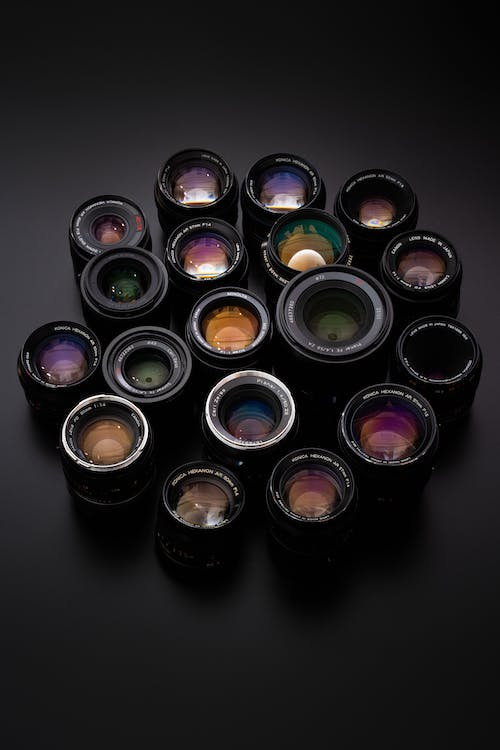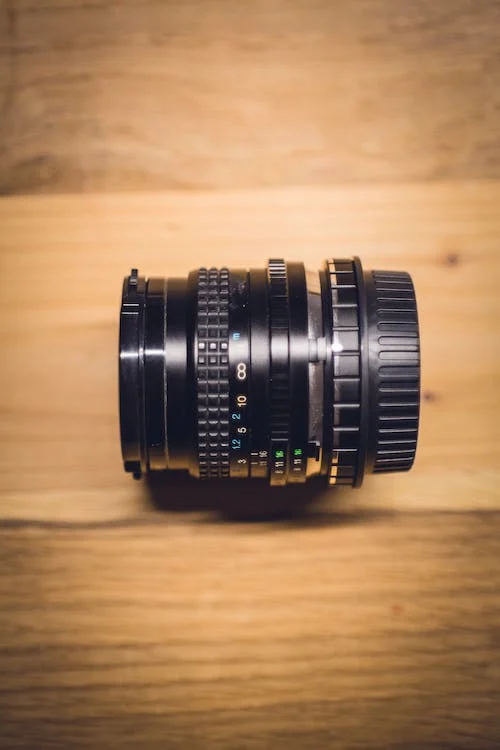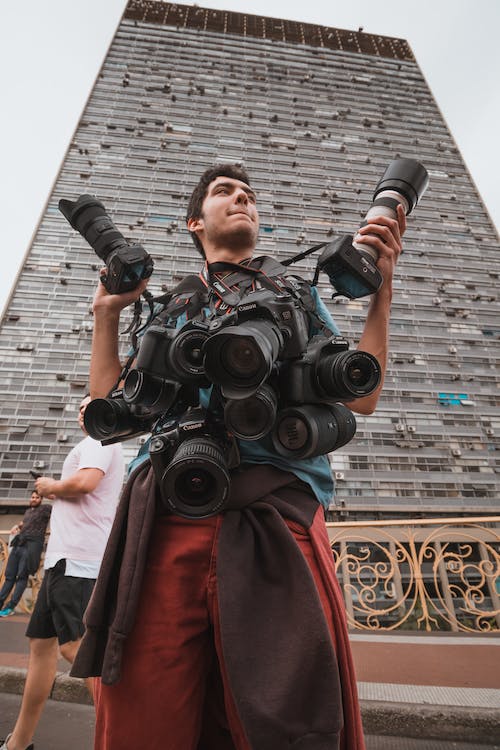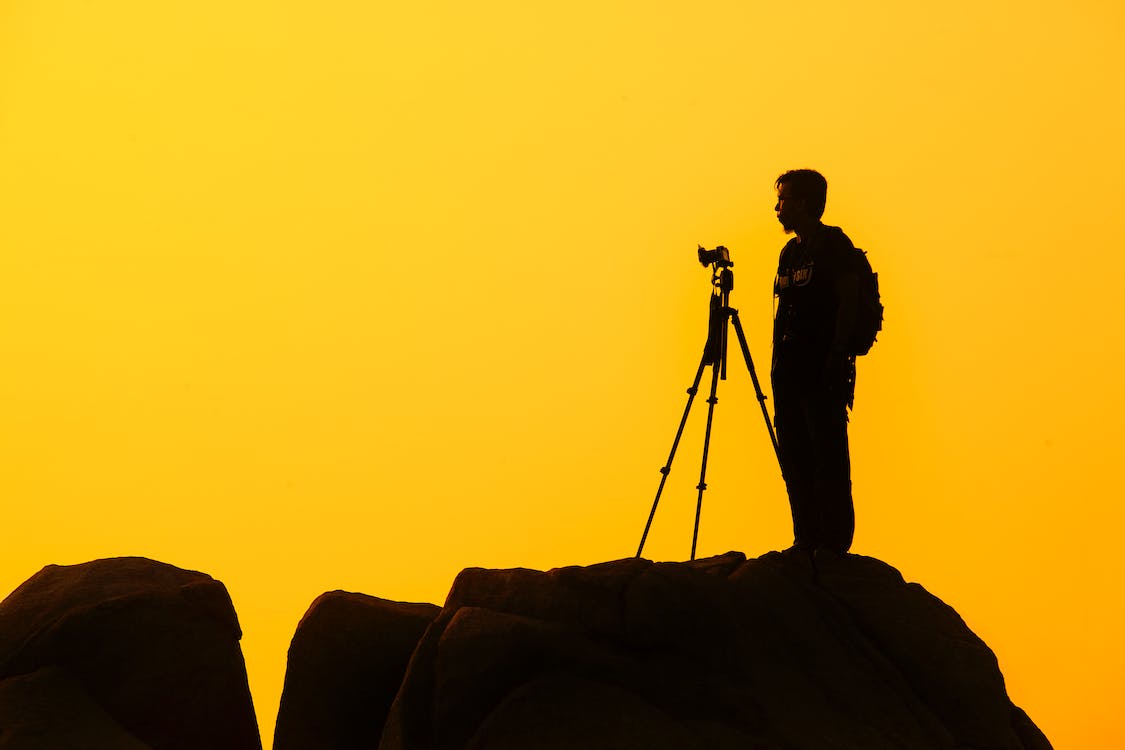Camera lens– along with a camera the single most crucial piece of equipment for photography is lens, in some ways, lenses are even more important than the camera itself, because the lens is what actually focuses the light to reach your camera sensor.
Certain cameras allow you to switch out your lenses. They’re called “interchangeable lens cameras.” You can swap a portrait lens for a huge, expensive sports lens, using the same camera.
This is a major benefit, making your system far more flexible for different types of photography.
Some photographers use kit lenses which come bundled with many cameras. Other photographers buy their cameras and lenses separately. Either way, you definitely need to purchase a
lens.
How to choose the right camera lens?
No single lens works for everyone, as each photographer has his own unique needs. Know your photography requirements first before you look for a lens. Here are five factors when exploring different types of lenses:
1. Focal Length
A focal length is the distance (in millimeters) from the center of the lens to the sensor when the subject is in focus. The lower the number, the wider the shot. The higher the number, the longer the zoom.
If you want to fit more into your frame, you might want to look into wide-angle focal lengths: 14mm, 20mm, 24mm, 28mm, and 35mm.
On the other hand, if you want to get as close as possible to your subject, go for a telephoto lens with focal lengths that usually range from 50mm to 100mm. Just make sure that you get one with an f2.8 aperture so that adequate light can still pass through.
In most cases, selecting the right focal length relates to what sort of subject matter you’re interested in photographing. Different applications benefit from different lenses. Landscape photography leans toward wider angle lenses with 14mm to 35mm focal lengths. Architecture photography also works better with wide-angle lenses.
If you’re interested in portrait photography, the best lenses are between 45mm and 85mm. At these focal lengths, the proportions of the face and body are true to life and flattering.
In most cases, wildlife and nature photography requires long focal lengths in the 300mm to 600mm range. With those focal lengths, you can get nice, tight shots of birds and wildlife without scaring your subjects away.
2. Aperture
An aperture is the measure of how much light can enter your camera. It’s represented by the letter f and corresponding numbers, collectively known as an f-stop. A small aperture number like f1.2 means its opening is wider, which allows more light to come into the lens, making it great for shooting in low light.
Professional photographers usually purchase wide-maximum-aperture camera lenses with f/1.4, f/1.8, or f/2 apertures. With these wide apertures, you can shoot in any environment regardless of available light. That’s why these are among the best lenses on the market.
One caveat is that the wider your lens’s maximum aperture, the more expensive your lens will be. Most beginner photographers can get away with f/4, or f/5.6 lenses.
These models aren’t quite as fast as more expensive lenses and you can’t achieve the same shallow depth of field with them. But they are much more affordable and are useful for learning photography. For that reason, an f/4 or f/5.6 is often the best first lens to buy.
3. Prime lens vs. zoom lens
Get a prime lens if you want to incorporate more brightness into your shots and be able to tweak and correct shooting errors easily. But if getting as close as possible to the subject is your main priority, then you should get a zoom lens.
If you’re hoping to purchase a single lens that can accommodate many different types of photographic subjects, then a zoom lens is probably the best choice for you. You can shoot landscapes and architecture with the zoom lens’s wider focal lengths, shoot portraits with the mid-range focal lengths, and shoot wildlife photography with the longest focal lengths.
If your goal is general-purpose shooting, a zoom lens is the best lens for photography.
Choosing the Right Lens for the Right Shot
To choose the right lens for the right shot, depends on how you like to shoot, and what you like to shoot.
The following are the different kind of camera lenses:
Wide-angle lenses (10mm to 35mm) Wide angles give an expansive view, and when used correctly, they can wrap you in the scene.
If you shoot scenes with prominent foreground objects, then a wide-angle lens is the way to go.
Wide angles are also handy in tight areas, like small rooms, cars, caves, etc. They can create volume and expansiveness in a limited space.
A kit lens that zooms, such as a 14-42mm, 16-50mm, 18-50mm, 18-55mm, or 18-105mm lens. These are inexpensive lenses that offer a lot of versatility, which gives you a good idea of what specialty lenses to buy in the future. They’re also higher in quality than they sometimes get credit for.
Many kit lenses – lenses that come as part of a camera package – are standard zooms. However, there are also standard prime lenses.
A prime lens that doesn’t zoom, such as a 25mm f/1.8, a 35mm f/1.8, or a 50mm f/1.8 lens, which are especially good for portraits and people photos with a “shallow focus” effect.
A standard prime falls somewhere in that 35mm to 85mm standard range.
Back in the good old days of film, the most popular standard lens was a standard prime: the 50mm
A telephoto zoom lens, such as a 55-200mm. This type of lens lets you photograph distant objects like wildlife or sports.
Telephoto lenses get you close to a subject without actually approaching them. Working with a telephoto lens is like shooting through binoculars because they magnify distant subjects.
The most popular telephotos seem to be various flavors of 70-300mm or 70-200mm.
Factors to consider in picking the perfect lens for a shoot
A lot of planning goes into any photoshoot. Choosing the right lens for your photoshoot is a critical part.
Type of Photography
Once you know the style of photography you’re going for, you’ll need to pick a lens that meets your needs in multiple areas. The focal length is essential, but you should also consider whether you need a wider aperture.
If you’re going for a specific type of photography, such as a vintage style, you might also want to consider taking lens filters with you.
The Weather Conditions
Since you won’t know the exact weather condition on the day of photoshoot consider what you’ll likely to encounter. The weather conditions you’ll shoot in will also determine how you store your camera lens.
Physical Activity in the Actual Shoot
When choosing the right lens for your photoshoot, you’ll need to think about much more than the photography aspect. If you’re planning to go on a long hike, you’ll want to think twice about bringing multiple lenses. Consider the other equipment that you’re already bringing along.
Safety of the Destination
If you live somewhere relatively safe, it’s easy to forget that danger exists in many parts of the world. It’s an unfortunate reality, but you need to consider what threats you might run into if you’re taking photos in a place you’re unfamiliar with—especially if you’re traveling abroad.
The Lighting Conditions
Lighting is the most crucial aspect of photography, and knowing the conditions you’ll have to play with on your photoshoot is essential. Some lenses can let more light in than others, meaning that you might find yourself cut short if you make the wrong choice.
Distance From Your Subject
When picking a lens for your photoshoot, you will also need to think about the distance you’ll stand from your subject. If you’re going to be far away, you will want a lens with a longer focal length.




